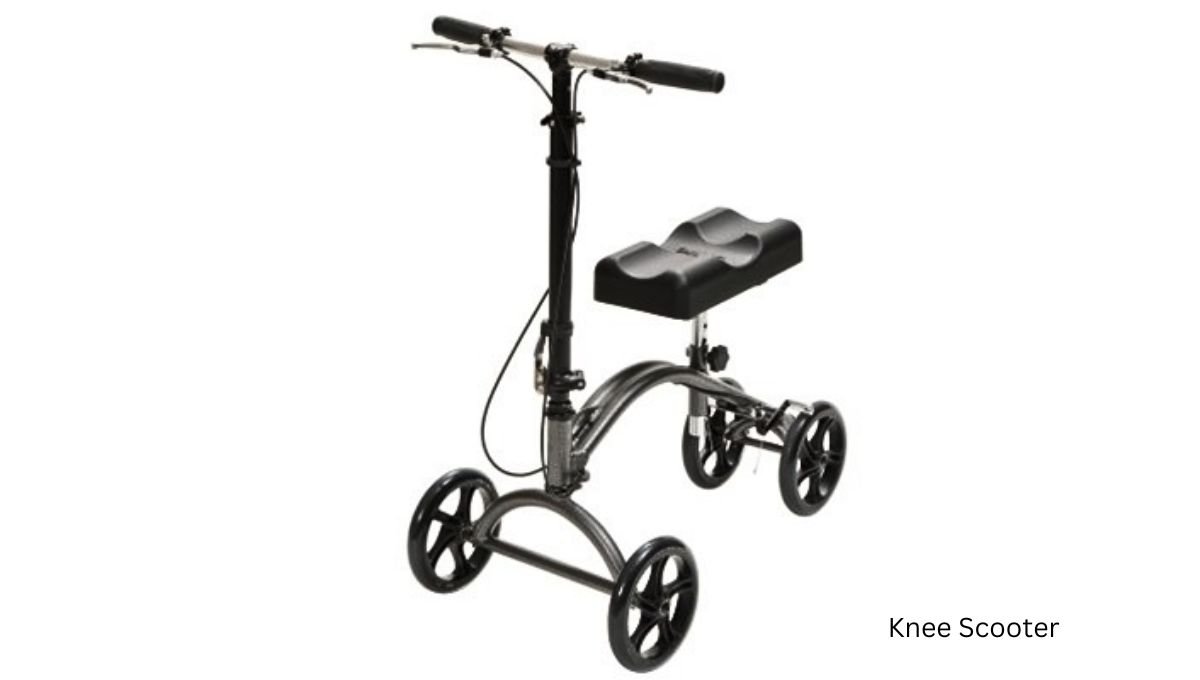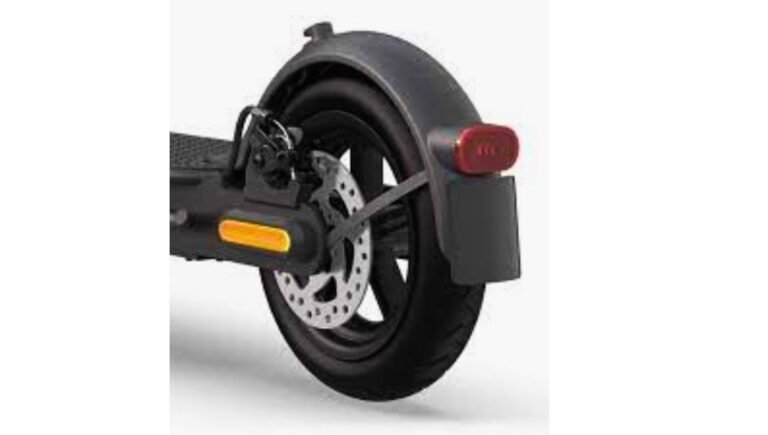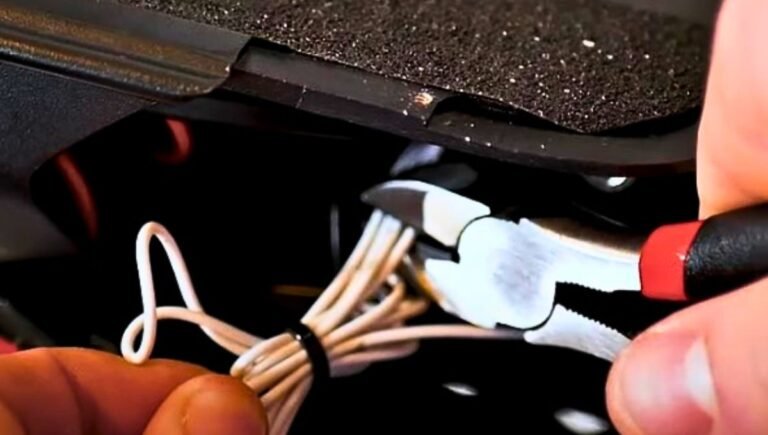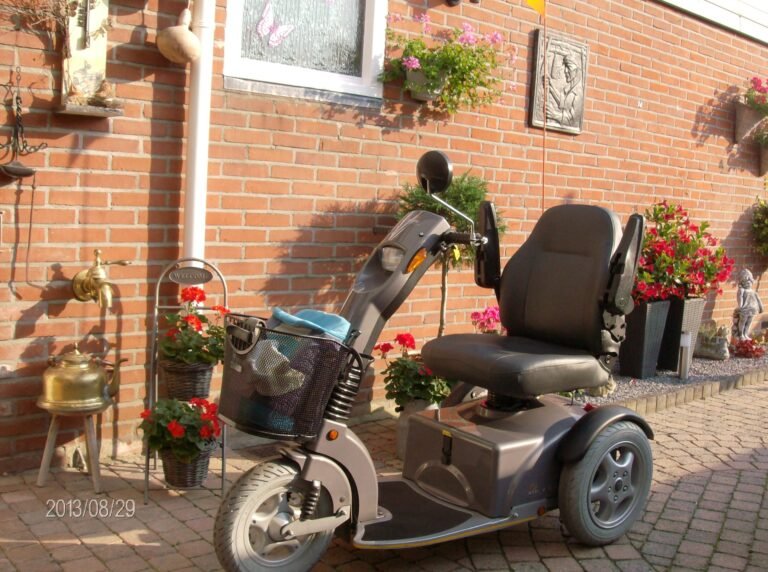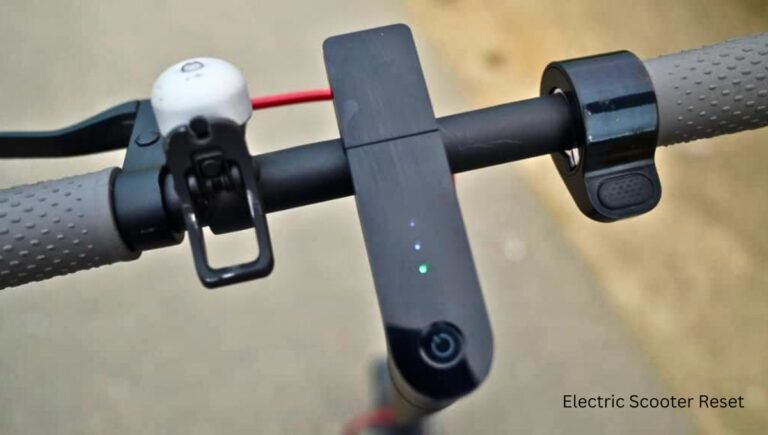Can You Sit On A Knee Scooter? Comfort Tips Revealed
Yes, you can sit on a knee scooter as they are designed for weight-bearing use. Knee scooters are ergonomic mobility aids that allow users to rest their injured leg comfortably while moving around.
They are an excellent alternative to crutches, providing stability and support for individuals with leg injuries, foot surgeries, or other mobility issues. With adjustable knee pads and handlebars, knee scooters offer a comfortable and safe seated position for users to navigate their surroundings.
Whether at home, work, or outdoors, knee scooters provide a convenient and practical mobility solution for those recovering from lower leg injuries.
Introduction To Knee Scooters
Knee scooters are designed for mobility after injuries, but sitting on them for short periods is possible. While not ideal for long durations, knee scooters offer a seated option for relief when needed during recovery.
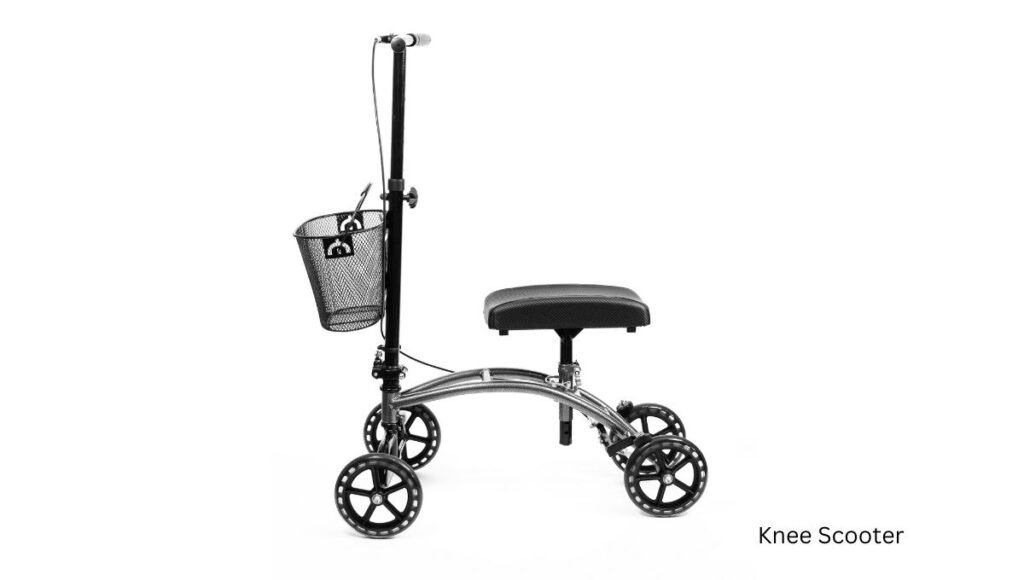
The Rise Of Mobility Aids
It has become increasingly popular in recent years as a mobility aid for individuals who have suffered an injury or undergone surgery that limits their ability to walk. They are a great alternative to traditional crutches, as they provide more stability and allow for greater mobility, making it easier for individuals to go about their daily activities.
Knee Scooter Basics
Knee scooters are essentially a four-wheeled device that allows an individual to rest their knee on a padded platform while propelling themselves forward with their other foot. The handlebars provide stability and control, allowing the user to easily maneuver the knee scooter. Knee scooters come in a variety of sizes and styles, allowing individuals to choose the one that best fits their needs.
Can You Sit On A Knee Scooter?
Many people wonder if it is possible to sit on a knee scooter, and the answer is yes. Most knee scooters come equipped with a padded seat that can be attached to the device, allowing the user to take a break and rest their injured leg. However, it is important to note that knee scooters are primarily designed for standing use, so individuals should not rely on them as a primary seating option.
In conclusion, knee scooters have become a popular mobility aid for individuals who have suffered an injury or undergone surgery. They are a great alternative to traditional crutches, providing more stability and allowing for greater mobility. While knee scooters do come equipped with a padded seat, they are primarily designed for standing use and should not be relied upon as a primary seating option.
Sitting Vs. Kneeling On A Knee Scooter
Sitting on a knee scooter is not recommended due to stability issues. Kneeling is the proper position for safety and comfort while using a knee scooter. It helps distribute weight evenly and reduces strain on the body.
Design Intent And Usage
When it comes to using a knee scooter, you might wonder if you can sit on it instead of kneeling. While the primary design intent of a knee scooter is for individuals to rest their injured leg on the padded platform and propel themselves with their other leg, there are situations where sitting on a knee scooter can be beneficial.
Possible Modifications
If you find it uncomfortable or difficult to kneel on a knee scooter, there are some modifications you can consider to make sitting more feasible. Here are a few possible modifications:
1. Seat Attachment: Some knee scooters come with a detachable seat attachment that allows you to sit comfortably. These seats are usually adjustable in height and provide a stable platform for resting.
2. Knee Pad Cushion: If you plan to sit on your knee scooter, adding a cushioned knee pad can provide extra comfort and support. This modification can help alleviate pressure on your knee and make sitting for extended periods more manageable.
3. Handlebar Adjustments: Depending on the model of your knee scooter, you may be able to adjust the handlebars to a height that allows you to sit comfortably. This modification can provide additional stability and control while seated.
4. Backrest Addition: Some individuals may require additional back support when sitting on a knee scooter. In such cases, you can explore the option of attaching a removable backrest to enhance comfort and prevent strain on the back.
5. Customized Accessories: There are various accessories available in the market that can be customized to suit your sitting needs. These can range from padded seat covers to armrests, providing additional comfort and support while seated on a knee scooter.
Remember, it is essential to consult with your healthcare provider or the manufacturer of your knee scooter before making any modifications. They can offer guidance on the suitability and compatibility of these modifications with your specific knee scooter model.
Evaluating Knee Scooter Comfort
When using a knee scooter, comfort is a crucial factor to consider. Evaluating the comfort of a knee scooter involves assessing its cushioning and support, as well as its adjustability for personal comfort.
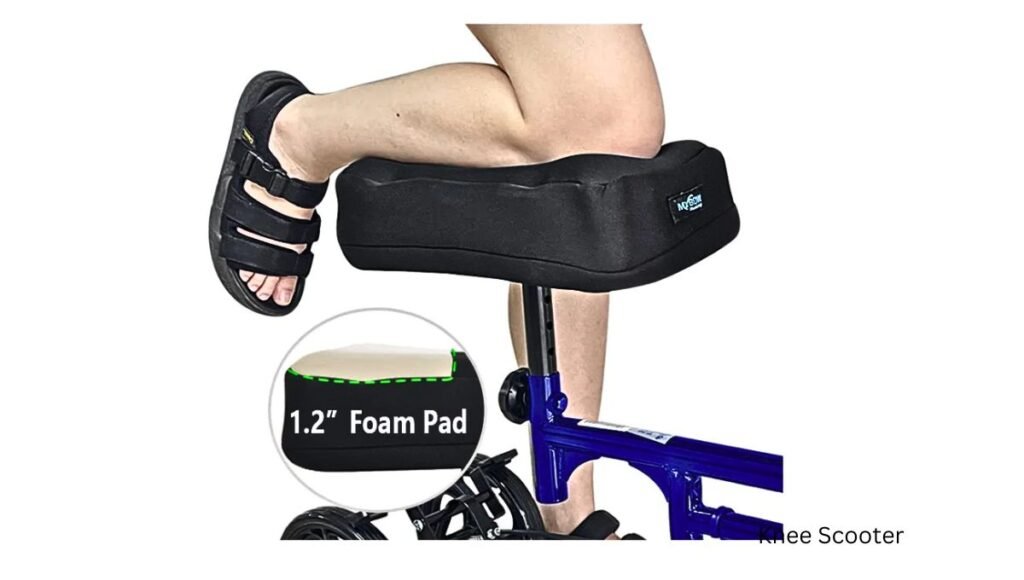
Cushioning And Support
Knee scooter comfort heavily relies on its cushioning and support. The knee pad should be adequately cushioned to reduce pressure on the injured leg. Additionally, the knee platform should provide stable support to prevent discomfort during prolonged use.
Adjustability For Personal Comfort
The ability to adjust the knee scooter to fit your specific needs is essential for optimal comfort. Features such as adjustable knee pad height, handlebar height, and steering should be considered to ensure a personalized fit.
Optimizing Your Knee Scooter Experience
If you have recently suffered an injury that requires you to use a knee scooter, you may be wondering how to optimize your experience. While knee scooters are a great alternative to crutches, they require proper posture and balance to ensure that you do not put additional strain on your body.
In this post, we will discuss two important factors to consider when using a knee scooter: proper posture and balance, and customizing for enhanced comfort.
Proper Posture And Balance
When using a knee scooter, it is important to maintain proper posture and balance to avoid any further injuries. Here are a few tips to help you maintain proper posture and balance:
- Keep your back straight and your shoulders relaxed
- Place your injured leg on the knee pad
- Place your non-injured foot on the ground and keep it stable
- Use your non-injured foot to push yourself forward
- Avoid leaning to one side or the other
Customizing For Enhanced Comfort
While knee scooters are designed to be comfortable, there are a few ways that you can customize your knee scooter to enhance your comfort:
| Customization | How to Do It |
|---|---|
| Adjust the Height of the Knee Pad | Use the adjustment knob to raise or lower the knee pad to a comfortable height |
| Add a Cushion to the Knee Pad | You can purchase a cushion or use a small pillow to add extra comfort to the knee pad |
| Attach a Basket or Pouch | You can attach a basket or pouch to the front of the knee scooter to carry your belongings |
By optimizing your knee scooter experience with proper posture and balance and customizing for enhanced comfort, you can make your recovery process more comfortable and enjoyable.
Accessories For Added Comfort
When it comes to using a knee scooter, comfort is key. While knee scooters are designed to provide a convenient and efficient alternative to crutches, there are accessories available that can further enhance your comfort during the recovery process.
These accessories are specifically designed to provide added support and cushioning, allowing you to sit on the knee scooter for extended periods without discomfort.
Padded Covers
One of the most popular accessories for added comfort on a knee scooter is a padded cover. These covers are made of soft and cushiony materials that provide a layer of padding between your injured leg and the scooter’s seat. The padded cover helps to distribute your weight evenly and reduces pressure points, preventing any discomfort or soreness that may arise from prolonged use of the knee scooter.
Additional Support Accessories
In addition to padded covers, there are also various support accessories available for knee scooters. These accessories are designed to provide additional support and stability to your injured leg while using the scooter. Some examples of support accessories include:
- Knee Rests: Knee rests are attachments that provide extra cushioning and support to your knee, ensuring proper alignment and reducing strain.
- Handlebar Extensions: Handlebar extensions allow you to adjust the height and position of the handlebars, providing a more ergonomic grip and reducing strain on your upper body.
- Basket Attachments: Basket attachments are convenient for carrying personal belongings, eliminating the need to carry additional bags or items while using the knee scooter.
- Brake Attachments: Brake attachments provide additional control and stability, allowing you to easily stop or slow down the knee scooter when needed.
By utilizing these additional support accessories, you can customize your knee scooter to fit your specific needs and enhance your overall comfort and mobility during the recovery process.
Safety Considerations While Sitting
When using a knee scooter, it’s important to consider safety aspects when sitting down. Here are some key factors to keep in mind to ensure a safe and comfortable experience.
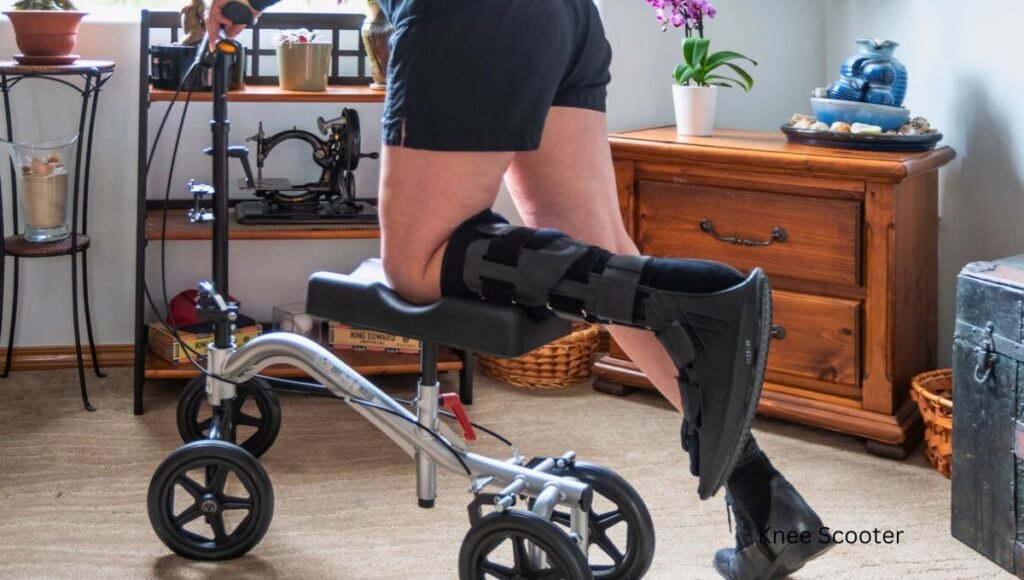
Stability Concerns
Maintaining stability while sitting on a knee scooter is crucial for preventing accidents or injuries. Ensure that the scooter is on a level surface and locked in place before attempting to sit. It’s also important to distribute your weight evenly and avoid sudden movements to maintain stability.
Best Practices For Sitting Safely
When sitting on a knee scooter, it’s essential to position yourself carefully to maintain balance and prevent tipping. Keep your back straight and your feet firmly planted on the ground for added support. Additionally, always engage the scooter’s brakes before sitting down to prevent any unexpected movement.
Alternatives To Knee Scooters
Considering alternatives to knee scooters? Let’s explore some options:
Wheelchairs And Seated Scooters
Wheelchairs offer more stability compared to knee scooters.
Seated scooters are compact and easier to maneuver indoors.
Pros And Cons Of Different Mobility Aids
- Wheelchairs: Stable but bulky
- Seated Scooters: Maneuverable but limited weight capacity
Real User Experiences
Testimonials
Discover what actual users have to say about their knee scooter experience:
Case Studies
Explore real-life examples of individuals benefiting from using knee scooters:
Conclusion
Sitting on a knee scooter is possible and can provide relief. It’s important to adjust carefully for comfort and safety. Consider your specific needs and consult with a healthcare professional. With proper usage, a knee scooter can be a valuable aid in your recovery journey.

